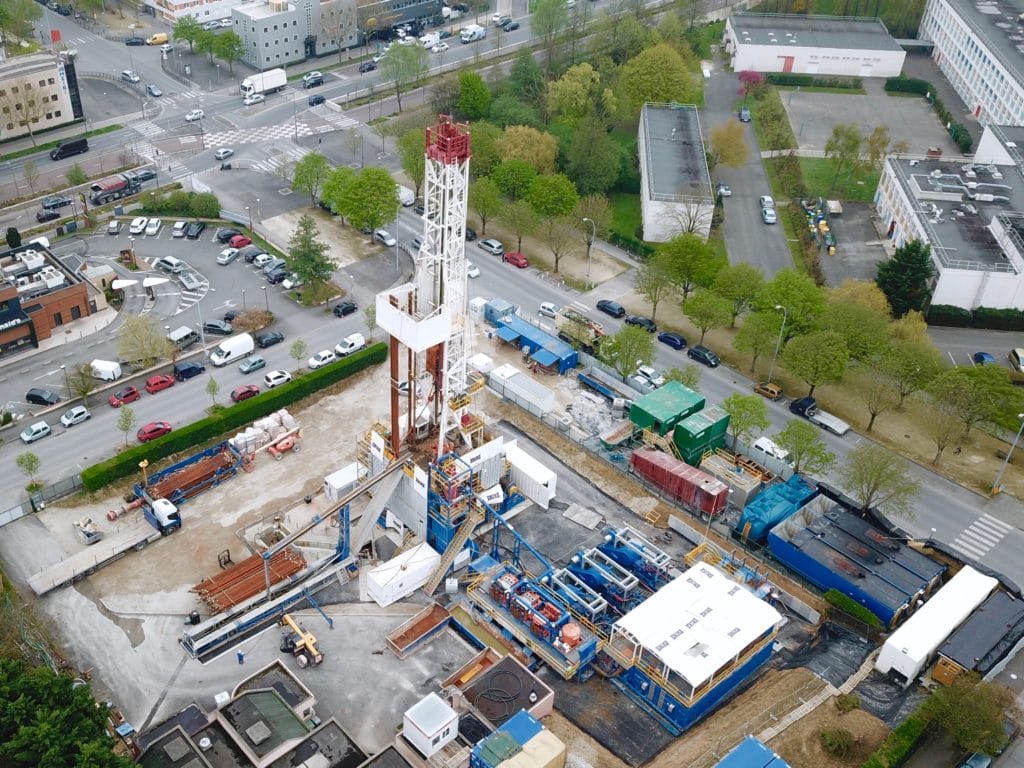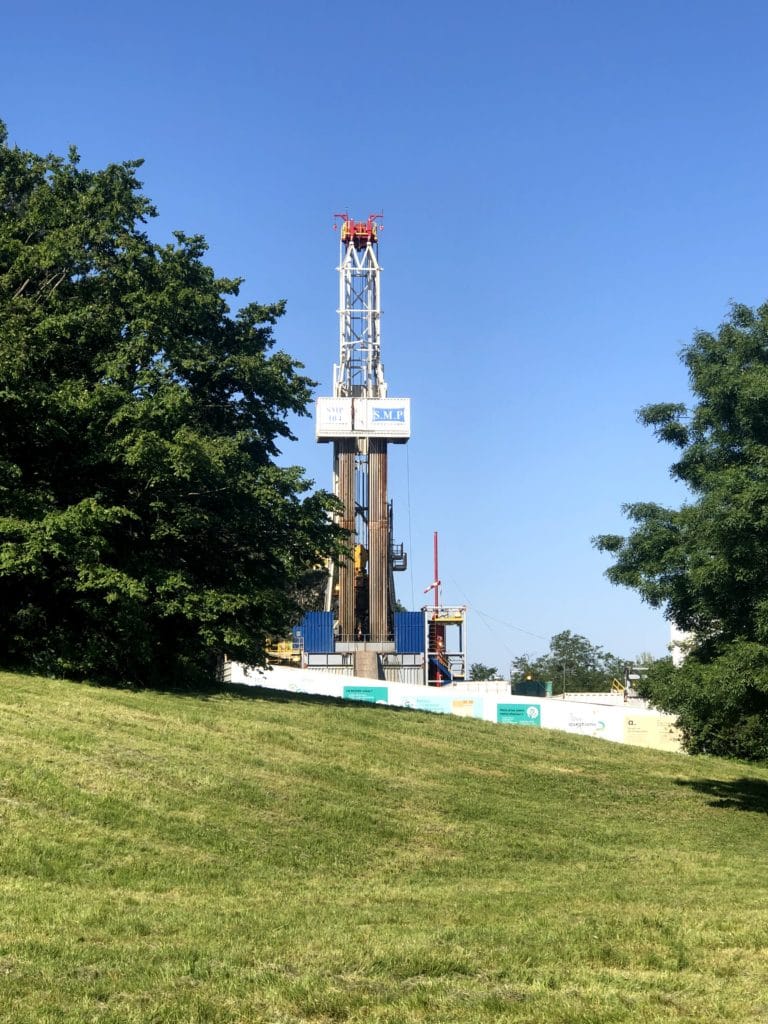Tomato farmers in the Alps and fishermen casting lines on remote Indonesian islands show how expansive geothermal energy has become.
Miklos Antics, Managing Director of GPC IP/GEOFLUID and President of the European Geothermal Energy Council, has watched it evolve. He’s spent more than 30 years in the industry.
Between oil and gas crashes, the $1 billion Euro Green Deal in response to climate change, and the recent COVID-19 pandemic, geothermal energy has been turned to in times of need.
“Everything will change after this Corona Virus,” explains Miklos.
“We are going back to the origins and we will try to use our own natural and in-place energy resources for heating, for food, for transport.”
COVID-19 brought society to a standstill. It changes how countries will interact globally for years to come, and has forced economies to look for local resources, including energy.
Miklos himself is based in a geothermal success story: Paris, France.
“The Paris area has become the largest district heating system in the world by heating the homes of more than 2 million people and producing more than one million megawatt thermal hours a year,” Miklos says.
Yet, that success too came out of a crisis.

Birth and rebirth of geothermal
Paris was always well suited for geothermal energy. Below the Eiffel Tower’s heartwarming romance an equally warm bedrock resource waited to be tapped. The city also had the population density to make a system an effective investment.
Except back in the 1970s, there was already a convenient energy source: oil. The tables turned during the oil and gas crisis in the 1970s to 1980s. The city then had new incentive to look at the consistent, sustainable energy resource below its streets.
“In the 80s and 90s, they developed 52 doublets – that means more than 104 wells for geothermal space heating in the area – all around Paris,” says Miklos.
In a doublet system, one well pushes water down into a deep geothermal reservoir. A second well draws the heated water back up to be used.
How long this system works depends on many factors, and Miklos has been working on expanding its lifespan.
“In 2005, we have seen the rebirth of geothermal in France with more development of the Paris area,” Miklos explains.
“Geothermal has been developed more than 30 years in the area and exploited for 30 years, and operators were looking at the question: What would we do when thermal breakthrough will occur in our doublets?”
How long would the expensive systems last?
Threats to geothermal success
One major challenge to operations is within geothermal fluid. It can contain H2S CO2 , which is corrosive to the wells.
“Essentially, we deal with this with inhibitors to protect the casing. But in spite of injecting inhibitors, we also need to come and rehabilitate the wells in time.”
Rehabilitation typically meant adding a new lining to old wells. Yet, adding a lining decreases a well’s diameter — and thus its flow rate and production.
“And this is where the concept of ‘triplet’ came in. We convert the re-lined existing wells, into injectors,” Miklos explains.
The concept of a triplet was born out of failing wells. Two re-lined (now smaller) wells were repurposed for injecting water, and a third brand new well – built with more capacity to extract – draws the hot water out.
The new wells are dressed with modern technology to combat the corrosive fluids, so that they also last longer.
“We have also developed new techniques, like the anti-corrosion well, which is a material solution to corrosion. We have lined the steel prop-casing well with fiberglass.”
At one site in the north of Paris, Miklos’ team converted doublets from the 1980s into triplets and extended the life of the resource for another 25 years.

Keeping the heat alive
Yet, some wells become too low producing to be effective, even when a good geothermal resource remains below them. Once traditional well technology has failed, geothermal engineers began looking to other industries that drilled wells – like an energy competitor, oil.
“We want to be able to harvest more geothermal energy from the same resource by adopting modern well architectures,” says Miklos.
“Horizontal, sub-horizontal, radial wells: They are very common in the petroleum industry, especially offshore multilaterals… so we have started to copy the petroleum guys a bit.”
Although many geothermal techniques remain the same as when Miklos started his career, with more ambitious projects and new well architectures, reservoir modelling has evolved too.
Geothermal wells are multimillion dollar projects and a lot of risk is involved when selecting targets. Modern surveys for geological, geophysical, and hydrogeological data paired with software to interpret it are helping companies target and drill with more accuracy.
“Are we going to change modeling habits? Yes, we absolutely need to change for de-risking, and also for more modern reservoir approaches, ” Miklos says.
Geothermal goes deeper
Many municipal projects in Europe are now mandated to explore green energy options during development, from libraries to housing.
“District heating should be the key – and district cooling. In Europe, we spend over 45% of energy on heating,” Miklos explains.
There are now over two million shallow geothermal installations in Europe. These systems don’t require a very hot resource to be effective. One site in the north of Paris is only 56 degrees Celsius yet heats around 10,000 homes.
After COVID-19, Miklos hopes more funding and interest in local energy will allow for larger scale projects that go deeper.
Past government incentives weren’t sufficient to seriously pursue deep geothermal resources, but as a result of the pandemic and climate change, many major cities are looking for larger, localised sources of energy.
“We certainly will need deep geothermal to take the lead on district energy systems with large density of population, like the Paris suburbs, like the Amsterdam suburbs, like Munich area,” says Miklos.
“Munich, has the ambition of converting the entire city into geothermal until 2030 – and they will do it.”

What’s the future of geothermal?
A greenhouse grower in the Alps recently reached out to Miklos to find a geothermal source to grow tomatoes, because their customers want vegetables grown with green energy. The energy market is being driven not only by necessity, but demand.
“We can produce food sustainably with geothermal, with green energy, and feed the European population using geothermal heat.”
Miklos’ vision is global. His team is also helping to develop off-grid energy for cooling systems on remote Indonesian islands. Communities there need a local, consistent electricity source and fishermen need refrigeration to store catches longer for their businesses to grow.
The volcanic islands are an obvious choice for geothermal development. Yet, from heating and cooling, shallow or deep, geothermal technologies clearly adapt to many landscapes and needs.
“I’m looking at geothermal resources as a house with many stories, with many neighbors,” explains Miklos.
“There are neighbors who are looking for the resource because they have huge needs. Neighbors who are looking for less energy demand. There are neighbors who are looking for so-called Smart Grid.”
“I think every application will take its place.”




